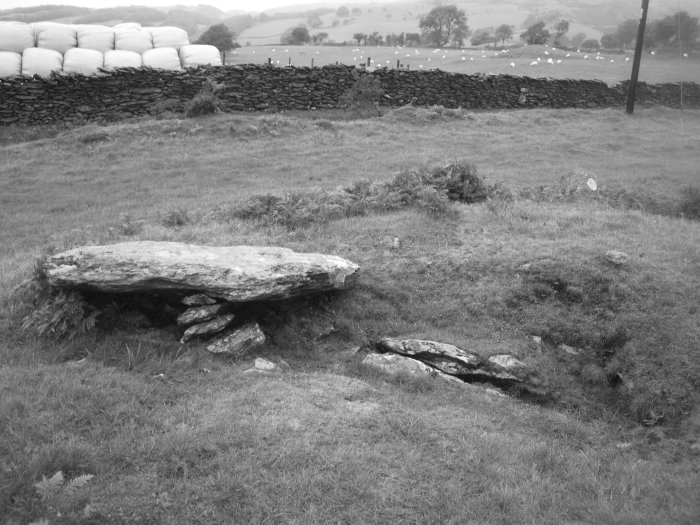[< Gallery Home | Latest Images | Top 100 | Submit Picture >]
277688 Pictures
|
<< Previous Picture | Next Picture >>

| Submitted by | TimPrevett |
| Added | Sep 02 2006 |
| Hits | 1538 |
| Votes | 1 |
Description
A view of the displaced capstone and collapsed central cist.
Posted Comments:
Marco23 (2023-10-29)
Culled notes from a 1968 booklet on Bedd Taliesin (Taliesin's Grave) published by a museum once based in nearby Tre'rddol.
First known mention is made by Edward Lhuyd in 1695 addenums to Camden's Britannia on page 647.
Next mention is by Lewis Morris in 1747 in his book 'Celtic Remains'.
Henry Penruddocke wrote in 1774 - Gentleman's Tour through Wales - '..has within these five years been entirely plundered and the broken stones are converted to gate-posts... This rage for the destruction of pagan remains is attributed by some to the zeal of the modern Methodists who abound in these parts.'
In 1840 Nicholson wrote in his Cambrian Travellers Guide - 'A large heap of earth is surrounded by two circles of stones, the innermost of which is 27 feet in diameter and the outer about 31 feet.
The Cambrian Archaeological Association during it's first annual meeting decided to pay a visit... Some of the party took dimensions of the 'carn' which was found to be about 135 feet in circumference. The cistvaen or grave, in the centre, consists of several massive slabs of stones, forming a grave about eight feet long by two feet six inches wide; one of the slabs, which once covered the grave is five feet nine inches. They found the remains in a very disturbed state.'
It is unlikely the bard Taliesin ever had anything to do with this (prehistoric) monument despite numerous legends.
More recently, in this century; a discovery was made close the big stone in the background of the first photo. Crushing stones, a foot to eighteen inches in length used to break up ore were found there. When tested these were shown to have been carried up from the coast. It is thought the large cup mark or indent in the large stone was caused by this process.
First known mention is made by Edward Lhuyd in 1695 addenums to Camden's Britannia on page 647.
Next mention is by Lewis Morris in 1747 in his book 'Celtic Remains'.
Henry Penruddocke wrote in 1774 - Gentleman's Tour through Wales - '..has within these five years been entirely plundered and the broken stones are converted to gate-posts... This rage for the destruction of pagan remains is attributed by some to the zeal of the modern Methodists who abound in these parts.'
In 1840 Nicholson wrote in his Cambrian Travellers Guide - 'A large heap of earth is surrounded by two circles of stones, the innermost of which is 27 feet in diameter and the outer about 31 feet.
The Cambrian Archaeological Association during it's first annual meeting decided to pay a visit... Some of the party took dimensions of the 'carn' which was found to be about 135 feet in circumference. The cistvaen or grave, in the centre, consists of several massive slabs of stones, forming a grave about eight feet long by two feet six inches wide; one of the slabs, which once covered the grave is five feet nine inches. They found the remains in a very disturbed state.'
It is unlikely the bard Taliesin ever had anything to do with this (prehistoric) monument despite numerous legends.
More recently, in this century; a discovery was made close the big stone in the background of the first photo. Crushing stones, a foot to eighteen inches in length used to break up ore were found there. When tested these were shown to have been carried up from the coast. It is thought the large cup mark or indent in the large stone was caused by this process.
To post comments first you must Register!
